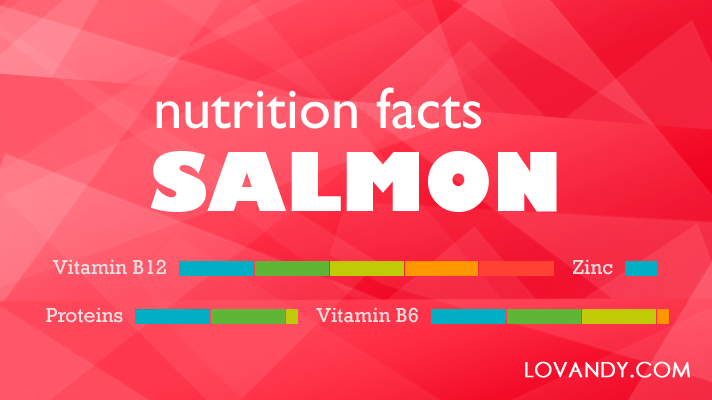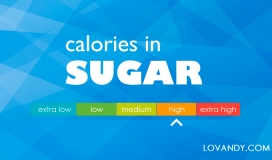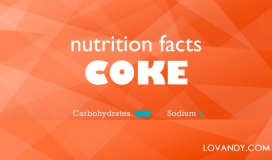Salmon is known to be one of the most beneficial for health products. This fish is used in many dishes all around the world. Therefore, you might ask: “What is salmon so unique for?” Let us find out!
Vitamins and Nutrients in Salmon – Which Ones Could be Found There?
As any fish does, salmon contains a lot of phosphorus, which is necessary for your body to form strong bones and teeth, and also to maintain vitality and energy production. In addition, phosphorus in conjunction with other substances is involved in particularly all physiological processes in the body.
The composition of salmon also includes calcium, magnesium, sodium and especially a lot of potassium, without which the muscles could not cope with the work that they have to withstand daily. Vitamins contained in salmon meat play an important role. Among them, the most noticeable are the vitamins of B group.
The composition of salmon includes almost all the vitamins of B group, which is very important, because individually they are less effective.
In addition to vitamins B, salmon contains vitamin A, known for its benefit for the developing of organism. Of course, there is some E and a tiny amount of C vitamins. However, that is hardly the most important thing about salmon being so beneficial for health.
Content of Essential Omega-3 in Salmon
The main benefit of salmon lies in its high content of special acids – omega-3. These are polyunsaturated fatty acids, among which the most important for the human body are alpha-linolenic (ALA), eicosapentaenoic (EPA) and docosahexaenoic acid (DHA). It is especially nice as the human body itself is not able to synthesize these acids. That is why it is so important for us to consume them with food.
Salmon fillet is so famous and beneficial due to containing a high concentration of Omega-3 acids.
Another reason for the high benefits of salmon is that it contains an extremely small proportion of harmful trans-fats, which cause the accumulation of cholesterol in the body.
Some Facts about Proteins in Salmon
There are no carbohydrates in salmon meat at all. Proteins and fats are sources of calories in there. Protein contained in this fish is digested much better than protein from animal meat – almost by 98%. The meat of salmonids contains a large number of interchangeable and essential amino acids, essential for the human body.
Find out more about salmon:
What is the Difference between Nutrition of Salmon Fillet, Skin and Belly?
The first thing you think about when hear a word ‘salmon’ is a nice red fillet. It is the most popular form of this fish used for cooking. The first reason for this is, of course, the absence of bones and the softness of meat. However, there is something much more important.
If to compare salmon fillet with skin, there is almost twice more vitamins and three times more phosphorus in fillet. Talking about belly, there is a slight difference between it and fillet. However, the last one is much easier to cook and serve, so a belly is not widely used. So, now you know that the part of the fish you like most is the most benefiсial.
Salmon Nutrition for Different Variants of Cooking (from Raw to Canned)
There are many ways of cooking salmon. Some recipes use a high-temperature treatment, while others tend to leave it rather raw. In general, the more you cook it, the more vitamins are lost. Even though the caloric value rises for grilled or smoked salmon, this does not mean it becomes more nutrient.
Things are rather different for a canned salmon. Most vitamins amount is less in there. However, there is more phosphorus.
Grilled salmon is perhaps one of the best variants of cooking for its nutrition is the closest to a raw fish. You may also like adding some boiled salmon to a soup or salad. Then you will lose some extra vitamins. Cool thing, omega-3 acids are still in there, even if you cook your salmon with a high temperature.
Facts about Smoked Salmon Fillet Nutrition
Smoked salmon contains almost three times less potassium than a raw one. There is also 25% less phosphorus. Talking about vitamins, some of B6 stored in a raw salmon weighs 0.8 milligrams, while there are only 0.27 milligrams in a smoked one.
| Name of nutrition component | Content per 6 oz. | Content per 8 oz. | Content per 100 g | Percent of daily intake (according to USDA) |
|---|---|---|---|---|
| Proteins | 31.1 g | 41.5 g | 18.3 g | 39.8% |
| Fats | 7.3 g | 9.7 g | 4.3 g | 15.9% |
| Carbohydrates | 0 g | 0 g | 0 g | – |
| Fiber | 0 g | 0 g | 0 g | – |
| Fatty acids | 1.5 g | 2.0 g | 0.9 g | 7.5% |
| Calcium | 19 mg | 25 mg | 11 mg | 1.1% |
| Magnesium | 31 mg | 41 mg | 18 mg | 5.6% |
| Potassium | 297 mg | 397 mg | 175 mg | 3.7% |
| Sodium | 1142 mg | 1525 mg | 672 mg | 29.2% |
| Iron | 1.3 mg | 1.8 mg | 0.8 mg | 4.4% |
| Phosphorus | 278 mg | 372 mg | 164 mg | 23.4% |
| Zinc | 527 µg | 704 µg | 310 µg | 3.9% |
| Vitamin A | 44 µg | 59 µg | 26 µg | 37.1% |
| Vitamin B1 | 39 µg | 52 µg | 23 µg | 20.9% |
| Vitamin B2 | 172 µg | 229 µg | 101 µg | 9.2% |
| Vitamin B3 (PP) | 8.0 mg | 10.7 mg | 4.7 mg | 33.6% |
| Vitamin B6 | 473 µg | 631 µg | 278 µg | 21.4% |
| Vitamin B9 | 3 µg | 5 µg | 2 µg | 0.5% |
| Vitamin B12 | 6.0 µg | 7.1 µg | 3.3 µg | 135.0% |
| Vitamin C | 0 g | 0 g | 0 g | – |
| Cholesterol | 39 mg | 52 mg | 23 mg | 7.7% |
Considering mentioned, smoked salmon is hardly the best way to eat the fish. However, it is rather popular due to its fabulous taste. On the other hand, you could eat some more to receive all the nutrients needed.
Nutrition of Wild Salmon vs. Farmed One
It is somewhat difficult to say which salmon (wild or farmed) is the best. For some reasons, you would like to eat a farmed one. Example given, there is more phosphorus in there. However, the amounts of some vitamins are rather less.
There is actually one significant advantage of farmed salmon – the amount of fatty acids (which omega-3 are).
It is three times more than in a wild fish. Therefore, do not worry about buying salmon in a supermarket. Perhaps, there will be a bit less vitamins, but totally more nutrients that salmon is famous for – fatty acids and phosphorus.
Nutrition of Raw Farmed Salmon Fillet
| Name of nutrition component | Content per 6 oz. | Content per 8 oz. | Content per 100 g | Percent of daily intake (according to USDA) |
|---|---|---|---|---|
| Proteins | 34.7 g | 46.3 g | 20.4 g | 44.3% |
| Fats | 22.7 g | 30.4 g | 13.4 g | 49.6% |
| Carbohydrates | 0 g | 0 g | 0 g | – |
| Fiber | 0 g | 0 g | 0 g | – |
| Fatty acids | 5.3 g | 7.0 g | 3.1 g | 25.8% |
| Calcium | 15 mg | 20 mg | 9 mg | 0.9% |
| Magnesium | 46 mg | 61 mg | 27 mg | 8.4% |
| Potassium | 617 mg | 824 mg | 363 mg | 7.7% |
| Sodium | 100 mg | 134 mg | 59 mg | 2.7% |
| Iron | 0.5 mg | 0.7 mg | 0.3 mg | 1.7% |
| Phosphorus | 408 mg | 547 mg | 240 mg | 34.3% |
| Zinc | 612 µg | 817 µg | 360 µg | 4.5% |
| Vitamin A | 99 µg | 132 µg | 58 µg | 8.3% |
| Vitamin B1 | 352 µg | 470 µg | 207 µg | 18.8% |
| Vitamin B2 | 264 µg | 352 µg | 155 µg | 14.1% |
| Vitamin B3 (PP) | 14.8 mg | 19.7 mg | 8.7 mg | 62.1% |
| Vitamin B6 | 1081 µg | 1444 µg | 636 µg | 48.9% |
| Vitamin B9 | 44 µg | 59 µg | 26 µg | 6.5% |
| Vitamin B12 | 5.4 mg | 7.3 mg | 3.1 µg | 133.4% |
| Vitamin C | 6.6 mg | 8.9 mg | 3.9 mg | 5.2% |
| Cholesterol | 94 mg | 125 mg | 55 mg | 18.3% |
Nutrition of Raw Wild Salmon Fillet
| Name of nutrition component | Content per 6 oz. | Content per 8 oz. | Content per 100 g | Percent of daily intake (according to USDA) |
|---|---|---|---|---|
| Proteins | 33.7 g | 44.9 g | 19.8 g | 43.0% |
| Fats | 10.7 g | 14.3 g | 6.3 g | 23.3% |
| Carbohydrates | 0 g | 0 | 0 g | – |
| Fiber | 0 g | 0 | 0 g | – |
| Fatty acids | 1.7 g | 2.3 g | 1 g | 8.3% |
| Calcium | 20.4 mg | 27.2 mg | 12 mg | 1.2% |
| Magnesium | 49.3 mg | 65.8 mg | 29 mg | 9.1% |
| Potassium | 833 mg | 1112 mg | 490 mg | 10.4% |
| Sodium | 75 mg | 100 mg | 44 mg | 1.9% |
| Iron | 1.4 mg | 1.8 mg | 0.8 mg | 4.4% |
| Phosphorus | 340 mg | 454 mg | 200 mg | 28.6% |
| Zinc | 1100 µg | 1450 µg | 640 µg | 8.0% |
| Vitamin A | 20 µg | 28 µg | 12 µg | 1.7% |
| Vitamin B1 | 387 µg | 515 µg | 227 µg | 20.6% |
| Vitamin B2 | 646 µg | 863 µg | 380 µg | 34.5% |
| Vitamin B3 (PP) | 13.4 mg | 17.9 mg | 7.9 mg | 56.4% |
| Vitamin B6 | 1392 µg | 1860 µg | 819 µg | 63.0% |
| Vitamin B9 | 43 µg | 57 µg | 25 µg | 6.3% |
| Vitamin B12 | 5 µg | 7 µg | 3 µg | 125.0% |
| Vitamin C | 0 g | 0 g | 0 g | – |
| Cholesterol | 94 mg | 125 mg | 55 mg | 18.3% |
Nutrition of a Baked Salmon Steak
| Name of nutrition component | Content per 6 oz. | Content per 8 oz. | Content per 100 g | Percent of daily intake (according to USDA) |
|---|---|---|---|---|
| Proteins | 32.8 g | 43.8 g | 19.3 g | 42.0% |
| Fats | 24.4 g | 32.6 g | 14.4 g | 53.3% |
| Carbohydrates | 0 g | 0 g | 0 g | – |
| Fiber | 0 g | 0 g | 0 g | – |
| Fatty acids | 4.1 g | 5.4 g | 2.4 g | 20.0% |
| Calcium | 7 mg | 9 mg | 4 mg | 0.4% |
| Magnesium | 32 mg | 43 mg | 19 mg | 5.9% |
| Potassium | 314 mg | 419 mg | 185 mg | 3.9% |
| Sodium | 255 mg | 340 mg | 150 mg | 6.5% |
| Iron | 15.9 mg | 21.3 mg | 9.4 mg | 52.2% |
| Phosphorus | 290 mg | 388 mg | 171 mg | 24.4% |
| Zinc | 519 µg | 692 µg | 305 µg | 3.8% |
| Vitamin A | 41 µg | 54 µg | 24 µg | 3.4% |
| Vitamin B1 | 97 µg | 129 µg | 57 µg | 5.2% |
| Vitamin B2 | 187 µg | 250 µg | 110 µg | 10.0% |
| Vitamin B3 (PP) | 9.0 mg | 12.0 mg | 5.3 mg | 37.9% |
| Vitamin B6 | 530 µg | 708 µg | 312 µg | 24.0% |
| Vitamin B9 | 12 µg | 16 µg | 7 µg | 1.8% |
| Vitamin B12 | 5.4 µg | 7.2 µg | 3.2 µg | 133.3% |
| Vitamin C | 0 g | 0 g | 0 g | – |
| Cholesterol | 267 mg | 356 mg | 157 mg | 52.3% |
Nutrition of Canned Salmon
| Name of nutrition component | Content per 6 oz. | Content per 8 oz. | Content per 100 g | Percent of daily intake (according to USDA) |
|---|---|---|---|---|
| Proteins | 36.3 g | 48.5 g | 21.4 g | 46.5% |
| Fats | 9.3 g | 12.4 g | 5.5 g | 20.4% |
| Carbohydrates | 0 g | 0 g | 0 g | – |
| Fiber | 0 g | 0 g | 0 g | – |
| Fatty acids | 2.5 g | 3.4 g | 1.5 g | 12.5% |
| Calcium | 423 mg | 565 mg | 249 mg | 24.9% |
| Magnesium | 51 mg | 68 mg | 30 mg | 9.4% |
| Potassium | 617 mg | 824 mg | 363 mg | 7.7% |
| Sodium | 664 mg | 887 mg | 391 mg | 17.0% |
| Iron | 1.2 mg | 1.6 mg | 0.7 mg | 3.9% |
| Phosphorus | 601 mg | 803 mg | 354 mg | 50.6% |
| Zinc | 1.7 mg | 2.2 mg | 1.0 mg | 12.5% |
| Vitamin A | 31 µg | 41 µg | 18 µg | 2.6% |
| Vitamin B1 | 34 µg | 45 µg | 20 µg | 1.8% |
| Vitamin B2 | 272 µg | 363 µg | 160 µg | 14.5% |
| Vitamin B3 (PP) | 12.1 mg | 16.1 mg | 7.1 mg | 50.7% |
| Vitamin B6 | 646 µg | 863 µg | 380 µg | 29.2% |
| Vitamin B9 | 34 µg | 45 µg | 20 µg | 5.0% |
| Vitamin B12 | 7.4 µg | 9.9 µg | 4.4 µg | 183.3% |
| Vitamin C | 0 g | 0 g | 0 g | – |
| Cholesterol | 66 mg | 88 mg | 39 mg | 13.0% |
Salmon is an extremely unique fish. Its composition of vitamins and minerals can be found nowhere else in nature. Moreover, a large content of omega-3 acids makes this product absolutely indispensable. Even being thermally treated, salmon does not lose much nutrients, meaning anyone will find a dish he or she likes. By the way, tell us how you like salmon best!















